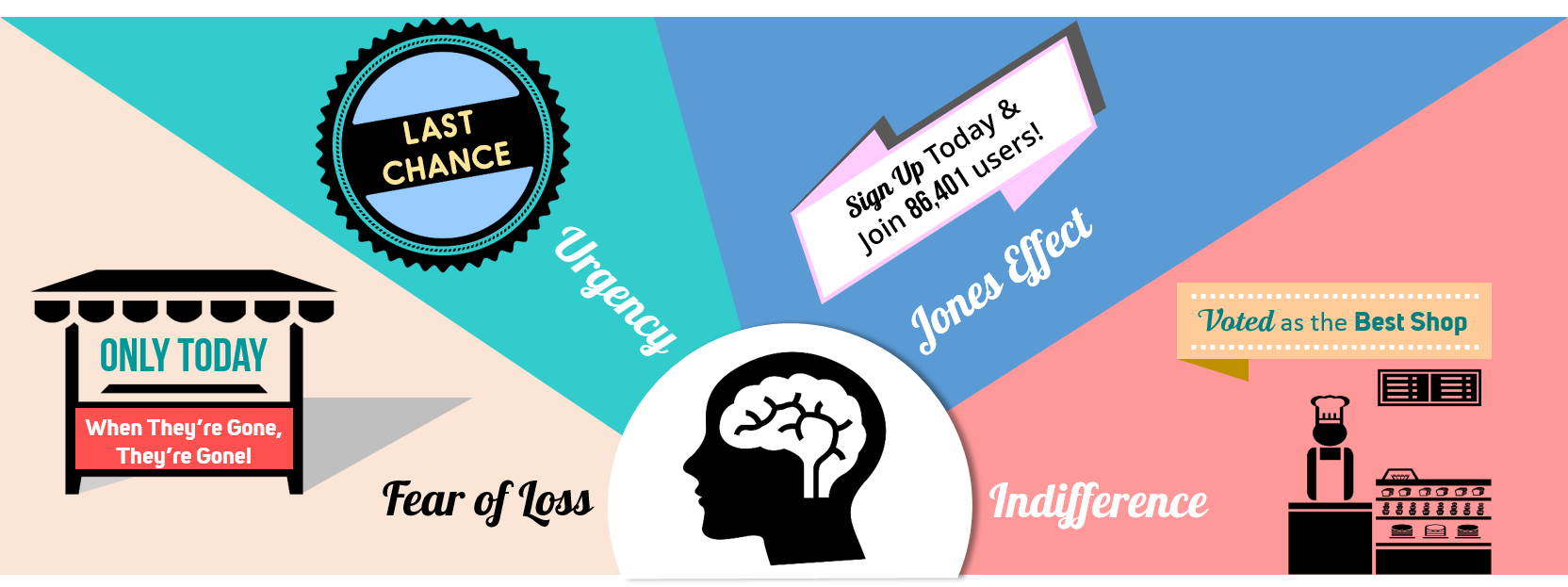The psychology behind the words

What makes one offer succeed better than another?
Everyone is attracted to a good deal. That’s why coupons and discounts are a great way to encourage existing and new customers to buy from you. But sometimes offering a big discount just doesn’t drive the sales you expect. So how do you know what to write? And, how can you be sure it will deliver the desired response?
The key is impulse marketing. One of the most powerful tools that triggers the desire to make a purchase immediately.
There are four impulse factors that are widely used in direct selling: fear of loss, urgency, greed and indifference. Not only do they work in direct sales, they are also applicable to permission based marketing. Let’s take a look at how they play a part in getting customers to act on an offer you’ve sent them. You can now use these psychological factors to influence customers, trigger the right reaction and deliver the sales you expect.
1. Fear of Loss
Nobody wants to miss out on a good deal. This is driven by the psychological need to not lose out. In fact many people have a tendency to strongly prefer avoiding losses to acquiring gains.
So, when sending offers to your customers, it is important that you promote the reasons why they need to buy from you now or run the risk of missing out – FOREVER. A common tactic used by many retailers is the phrasing “when they’re gone, they’re gone” – in other words, it is now or never!
Simply make your offer time-specific and you will establish a fear of loss effortlessly. This feeling is triggered by including a phrasing to describe that your promotion will be soon coming to an end, or you only have limited items in stock, so that they understand that if they don’t act immediately, they will lose out.
2. Sense of Urgency
Creating a sense of urgency with your offer can tempt consumers to make an unplanned purchase.
Psychologists have also proven that creating a sense of scarcity also triggers people to buy. We’ve all seen what happens if there’s a news story about a planned strike by petrol tanker drivers. Queues at every garage! So offers that are available for the first 100 people or for the next two hours only can have a big impact.
So make sure you put a deadline and a limit on your offer to create a sense of urgency and scarcity. For example, you could include messages such as “Today only”, “Last chance!”, “30% off for the first 10 customers” etc. Whatever your approach, creating a sense of urgency and scarcity is critical to ensuring your customers move past the purchase threshold!
3. Greed – sometimes called the Jones Effect
Simply put, The Jones Effect means that people want to follow what is popular or trending today – or to have what other people have. It is a method to make people feel that they could be left behind or out of touch with what is trending, and so motivate them to make a purchase to keep up with everyone else.
This can also be compared to one of Cialdini’s principles: Social proof – people are influenced to buy something which people like them have bought. This is more about following the crowd than greed but it shows the benefit of making it clear that an offer is popular.
For this to work of course, two factors must be included – how many others are buying this product and the fact that the buyers are similar to the customers you want to influence. This way, your customer will notice that “everyone else (similar to them) is buying the same thing”, and they will be more inclined to follow the crowd and make a purchase.
4. Indifference: Never appear desperate for a sale
This may be one of the hardest factors to master but if done right, it can be incredibly powerful.
The key here is to not push your offer to your customers but instead make them believe that you couldn’t care less if they make a purchase or not. However, being too indifferent can cause you to lose a sale so it is important to get the right message across.
Like the Jones Effect, by making your customers feel like “if you don’t buy this your neighbour will”, this increases the value of your product in their eyes and make them feel like they are missing out and are more compelled to buy.
Summary:
So there you have it. The four key impulse factors that are widely used in direct selling. Include these principles in your campaigns and you’re all set for triggering the right response and generating instant sales. But you may have some good advice of your own. Why not share it?

